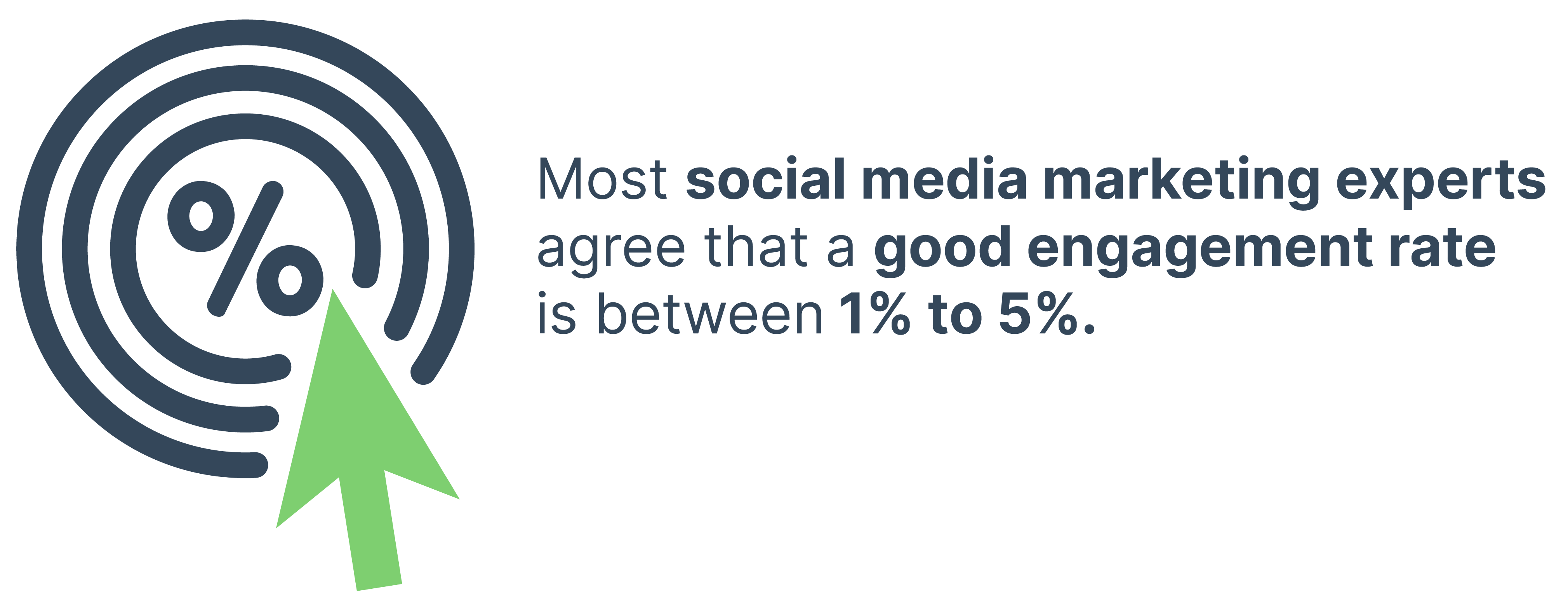Measuring Content Marketing Success: Essential Metrics to Track
Content marketing is a fundamental aspect of any successful marketing strategy. It has the ability to captivate audiences, build brand authority, and drive conversions, making it a vital tool for all businesses. The journey to content marketing success however is incomplete without a clear understanding of its impact. This is where the role of metrics becomes indispensable.
Measuring the success of your content marketing efforts not only validates your investment but also provides the insights needed to refine and enhance your strategy. Before diving into the metrics themselves, let's explore the importance of tracking these metrics and the considerations you should keep in mind when choosing the right ones for your unique goals and objectives.
What to consider before choosing your content marketing metrics
- Define your objectives: Before selecting your content marketing metrics, have a crystal-clear understanding of your objectives. Ask yourself what you want to achieve. Do you want to increase brand awareness, generate leads, boost conversion rates, or foster customer loyalty? Each goal may necessitate different metrics. For instance, if you're focusing on brand awareness, metrics like website traffic, social media engagement, and reach can be essential. On the other hand, if lead generation is the goal, you might emphasise conversion rates, lead quality, or the number of sign-ups.
- Align with business strategy: Your content marketing metrics should align with your broader business strategy. Ensure that the metrics you choose contribute directly to achieving your overall business goals. If your strategy centres on expanding your ecommerce platform, then metrics related to online sales, cart abandonment rates, and product views should be your focus. Alignment with your business strategy ensures that your content marketing efforts are not just productive but also strategically sound.
- Beware of vanity metrics: Be cautious of vanity metrics that might inflate your ego but offer limited real business value when considered in isolation. Metrics like page views, likes, or shares can make your campaigns seem successful at first glance, however, they sometimes don't translate into actual business outcomes. To avoid falling into this trap, take other metrics into consideration alongside those ones to help provide more actionable insights into your content's performance. For example, metrics like conversion rates, customer acquisition costs, and customer lifetime value provide more meaningful and actionable data for optimising your content marketing efforts.
By thoughtfully considering these factors, you can confidently choose metrics that are in perfect alignment with your content marketing objectives, ensuring that your strategy is not just successful but also genuinely impactful. So let’s get stuck right in and go through some of the most useful metrics for a content marketer to track to measure success.
Performance evaluation
Traffic metrics
One of the primary goals of content marketing is to drive traffic to your website. Content marketers should track various traffic metrics to assess the effectiveness of their content strategies and the impact of their content on website traffic. Here are some important traffic metrics to monitor for measuring success:
Page views: The total number of times a webpage has been viewed. Page views provide a general overview of how frequently your content is accessed.
Unique visitors: The number of distinct individuals who visit your website. Tracking unique visitors helps you understand the approximate size of your audience.
Sessions: A session is a single visit to your website. Tracking sessions helps you measure user engagement and interaction with your content.
Bounce rate: The percentage of visitors who navigate away from your site after viewing only one page. A high bounce rate may indicate that your content isn't engaging or relevant to visitors or that it doesn't meet user expectations.
Average session duration: The average amount of time visitors spend on your site during a session. Longer session durations often indicate that visitors are engaged with your content.
Dive deeper by segmenting traffic sources to identify which channels are generating the most traffic - organic search, social media, email marketing, or referrals. This insight can guide your resource allocation.
Engagement metrics
Beyond website traffic, you need to know how engaged your audience actually is to be able to determine if the content resonates with them. Here are some essential engagement metrics to measure:
Click-through rate (CTR): For email campaigns or calls to action (CTAs) in your content, monitor CTR. It measures the percentage of people who click on a link or button in your content. A high CTR shows that your content is compelling.
Social media engagement rate: Calculate the engagement rate on social media platforms by adding up likes, comments, and shares, then dividing by the total follower count. It offers a more comprehensive view of audience interaction.

Source: Hootsuite
Video views: For video content, track the number of views and watch time. This data provides insights into how well your videos capture and retain the audience's attention.
Content downloads: For downloadable resources like eBooks or guides, monitor the number of downloads. It indicates the appeal and value of your content.
Scroll depth: Analyse how far visitors scroll down a webpage. This metric reveals which parts of your content receive the most attention and which may need improvement.
Bounce rate by content type: Examine the bounce rate for different content types (e.g. blog posts, landing pages, videos). This helps you identify which content formats are most engaging with your target audience and which ones need optimisation.
Monitor these metrics for specific pages or content pieces. Identify what keeps visitors engaged and where they drop off. Use this data to fine-tune content strategies.
Goal achievement
Conversion metrics
Your content should guide users through the conversion funnel to determine how effective your content is at turning visitors into leads or customers. Here are a few metrics to consider:
Conversion rate: The conversion rate represents the percentage of users who take a specific action you desire, such as signing up for a newsletter or making a purchase. It measures the effectiveness of your content in converting visitors into leads or customers. Implement A/B testing to optimise conversion rates. Test different landing pages, forms, and calls to action to see what works best.

Source: WordStream
Form submission rate: If your content includes forms, tracking the form submission rate helps measure how well your content persuades users to provide their information, showing interest in your product or service. Offer valuable lead magnets like ebooks or webinars to increase lead generation.
Conversion funnel metrics: Analysing each stage of the conversion funnel, such as cart abandonment rates for e-commerce or the progression through a sign-up process, helps identify where users drop off and need further optimisation.
Implement conversion tracking for individual content pieces. This helps identify high-performing content that contributes significantly to conversions.
Social metrics
If social media is part of your content strategy, measuring social metrics is vital. Create shareable content with a clear call to action, encouraging users to share your content and increasing its visibility on social platforms. Content marketers should track a variety of social metrics to gauge the success and impact of their content on social media platforms. These metrics offer insights into content performance, audience engagement, and the reach of your content. Here are some important social metrics to monitor:
Shares: This includes the number of times your content has been shared on social media platforms. High share counts indicate that your content resonates with your audience and has the potential to go viral.
Likes/reactions: The number of likes, reactions, or other positive engagements your content receives on social media platforms. These metrics provide insights into audience sentiment and their appreciation for your content.
Comments: The number of comments your content generates on social media. Comments indicate engagement and allow you to engage in discussions with your audience, gaining valuable feedback and insights.
Clicks: The number of clicks on shared content links. Tracking clicks helps you understand the effectiveness of your social media posts and the relevance of the content you share.
Follower growth: Track the growth of your social media followers or fans over time. An increase in followers can indicate the success of your content in attracting and retaining an audience.
Resource allocation
Budget is important, so knowing how much budget to allocate to different aspects of your content marketing strategy is vital. Here are some metrics to consider in terms of resource allocation:
Cost per acquisition (CPA): To manage your budget efficiently, calculate the cost per acquisition. It helps you understand how much you're spending to gain a new lead or customer. By comparing CPA with your revenue, you can assess the financial efficiency of your marketing campaigns. analyse CPA across different marketing channels to identify the most cost-effective ones. Adjust your strategies based on these insights to optimise your budget allocation.
Return on investment (ROI): Every marketing activity should have a measurable return on investment. Calculate ROI by assessing the revenue generated from your content marketing efforts versus the costs incurred. A positive ROI indicates that your content marketing strategy is financially successful. When calculating ROI, consider the lifetime value of customers acquired through content marketing. This provides a more accurate representation of long-term profitability.
Audience Insights
Audience demographics: Knowing your audience is crucial for content creation. Metrics that reveal audience demographics, such as age, gender, location, and interests, guide your content strategy to align with your target audience. Create detailed buyer personas based on audience demographics. Tailor your content to address their specific needs, pain points, and preferences.
Content performance by type: Analyse which content types perform best. Are blog posts more effective than videos? Do infographics garner more engagement than podcasts? This insight helps you refine your content mix.
Conclusion
In the world of content marketing, measurement isn't just a luxury - it's a necessity. By tracking these essential metrics, you gain actionable insights that improve your content strategy, achieve your goals, and demonstrate the value of your marketing efforts. Embrace these metrics to ensure that your content marketing strategy aligns with your business objectives and provides a strong return on investment.
Track and visualise your content marketing metrics in real-time with a Hurree dashboard. Sign up for your free trial today and discover how to truly harness the power of analytics and transform your company reporting. If you have any questions then feel free to reach out to contact@hurree.co, we'd be happy to answer them!
Share this
You May Also Like
These Related Stories

[Infographic] KPIs for Measuring Personal Performance
The 11 Social Media KPIs You Should Really Be Tracking


